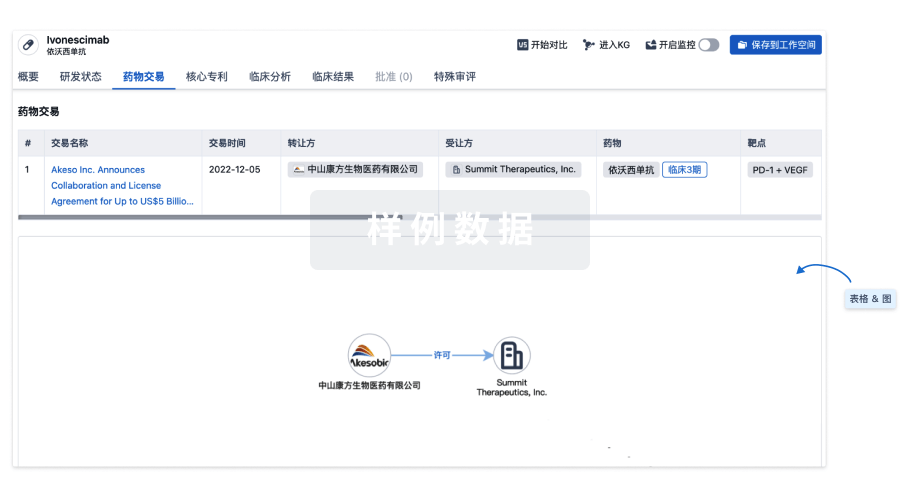更新于:2024-12-22
Cholesterol Lowering Program(Nyrada)
更新于:2024-12-22
概要
基本信息
原研机构 |
在研机构 |
非在研机构- |
最高研发阶段药物发现 |
首次获批日期- |
最高研发阶段(中国)- |
特殊审评- |
关联
100 项与 Cholesterol Lowering Program(Nyrada) 相关的临床结果
登录后查看更多信息
100 项与 Cholesterol Lowering Program(Nyrada) 相关的转化医学
登录后查看更多信息
100 项与 Cholesterol Lowering Program(Nyrada) 相关的专利(医药)
登录后查看更多信息
3
项与 Cholesterol Lowering Program(Nyrada) 相关的文献(医药)2024-12-17·Journal of the American Heart Association
Sex Differences in Nonadherence to Secondary Stroke Prevention Medications Among Patients With First‐Ever Ischemic Stroke
Article
作者: Chen, Chen ; Farris, Karen B. ; Reeves, Mathew J. ; Morgenstern, Lewis B. ; Lisabeth, Lynda D.
Background:
More women than men experience recurrent strokes. Medication adherence is critical to prevent recurrence; however, studies investigating sex differences are limited. We examined sex differences in poststroke medication adherence, overall and by drug class, and identified influencing factors.
Methods and Results:
Patients with first‐ever ischemic stroke were identified from a population‐based study (2008–2019). At 90 days after a stroke, self‐reported medication adherence was defined as never or rarely missing a dose in a typical week for each secondary stroke prevention medication (antihypertensives, cholesterol‐lowering drugs, antiplatelets, anticoagulants). We generated prevalence ratios (PRs) using modified Poisson models to assess sex differences with and without adjustment for potential confounding factors, including demographics, social factors, health system–related, lifestyle‐related, health condition–related, prestrokehealth–related, and stroke‐related factors. Among 1324 participants (48.4% women, 58.0% Mexican American individuals), women were more likely to report nonadherence to cholesterol‐lowering drugs (PR, 1.80 [95% CI, 1.14–2.84]) and antiplatelets (PR, 1.53 [95% CI, 1.003–2.34]). Adjusting for obesity attenuated while adjusting for age, marital status, access to care, smoking, and alcohol consumption accentuated sex differences. Race and ethnicity modified the sex difference in nonadherence to cholesterol‐lowering drugs (
Pinteraction
=0.054) such that the sex difference was larger in Mexican American individuals (PR, 3.00 [95% CI, 1.65–5.48]) than in non‐Hispanic White individuals (PR, 1.30 [95% CI, 0.52–3.27). No significant sex differences were found for nonadherence to antihypertensives and overall nonadherence.
Conclusions:
Poststroke medication nonadherence was more prevalent among women than men. This was partially due to the confounding effects of lifestyle, marital status, and access to care, suggesting potential subgroups for interventions to improve adherence.
2019-03-01·The Korean journal of internal medicine4区 · 医学
Ezetimibe decreased nonalcoholic fatty liver disease activity score but not hepatic steatosis
4区 · 医学
ArticleOA
作者: Nguyen, Mindie H ; Saeed, Waqar Khalid ; Kim, Hyun Jung ; Cheung, Ramsey C ; Lee, Hyo Young ; Ahn, Hyeongsik ; Oh, Hyunwoo ; Jun, Dae Won
BACKGROUND/AIMS:
A number of clinical trials reported varying effects of cholesterol lowering agents in nonalcoholic fatty liver disease (NAFLD) patients. We, therefore, assessed the changes in hepatic steatosis and NAFLD activity score (NAS) after treatment with cholesterol lowering agents in NAFLD patients by metaanalysis.
METHODS:
The Cochrane Library, the MEDLINE, and the Embase databases were searched until May 2015, without any language restrictions, for randomized controlled trials (RCTs) and nonrandomized studies (NRSs). Additional references were obtained from review of bibliography of relevant articles. The quality of evidence was assessed using the grading of recommendations assessment, development and evaluation guidelines.
RESULTS:
Three RCTs (n = 98) and two NRSs (n = 101) met our study inclusion criteria (adult, NAFLD, liver biopsy). Liver biopsy was performed in all five studies, but only the three studies reported NAS. Ezetimibe significantly decreased NAS (standardized mean difference [SMD], -0.30; 95% confidence interval [CI], -0.57 to -0.03) but not hepatic steatosis in RCT (SMD, -0.1; 95% CI, -0.53 to 0.32), while the effect was significant for both NAS and intrahepatic content in NRSs (SMD, -3.0; 95% CI, -6.9 to 0.91).
CONCLUSION:
Ezetimibe decreased NAS without improving hepatic steatosis.
2014-04-01·Endocrine3区 · 医学
Non-alcoholic fatty liver disease: a diabetologist’s perspective
3区 · 医学
Review
作者: Mahamood Edavalath ; Farrah A. Antonio ; Joseph M. Pappachan ; Arjun Mukherjee
In the recent years, non-alcoholic fatty liver disease (NAFLD) has emerged as the commonest cause of chronic liver disease in the developed world. The global epidemic of obesity secondary to physical inactivity and adverse food habits accounts for the alarming rise in NAFLD. Metabolic syndrome plays a major role in the pathogenesis of both NAFLD and type 2 diabetes mellitus (T2DM). Whilst most cases of NAFLD remain asymptomatic with only hepatic steatosis, about 30 % progress to non-alcoholic steatohepatitis with chronic liver inflammation that can lead on to fibrosis, cirrhosis, liver failure, and hepatocellular carcinoma. Because of the similar pathogenesis shared between T2DM and NAFLD, T2DM occurs as an important complication in many cases of NAFLD, and many cases of T2DM are further complicated by NAFLD. Rapid progression and increased complications of the individual diseases is the end result of this dual coexistence. Diagnosis of NAFLD relies upon hepatic imaging, serum biochemical markers, and liver biopsy. As in T2DM, the most important management option for patients with NAFLD is lifestyle changes targeted at weight reduction. Other treatment options include insulin sensitizers (metformin and pioglitazone), vitamin E, incretin mimetics, omega-3 fatty acids, cholesterol lowering agents, orlistat, and bariatric surgery. The clinical spectrum, patho-physiological features and therapeutic options of NAFLD share many things in common with T2DM and therefore, this review is to highlight the diabetologist's perspective of the disease.
100 项与 Cholesterol Lowering Program(Nyrada) 相关的药物交易
登录后查看更多信息
研发状态
10 条进展最快的记录, 后查看更多信息
登录
| 适应症 | 最高研发状态 | 国家/地区 | 公司 | 日期 |
|---|---|---|---|---|
| 高胆固醇血症 | 药物发现 | 澳大利亚 | 2024-04-12 |
登录后查看更多信息
临床结果
临床结果
适应症
分期
评价
查看全部结果
| 研究 | 分期 | 人群特征 | 评价人数 | 分组 | 结果 | 评价 | 发布日期 |
|---|
No Data | |||||||
登录后查看更多信息
转化医学
使用我们的转化医学数据加速您的研究。
登录
或

药物交易
使用我们的药物交易数据加速您的研究。
登录
或

核心专利
使用我们的核心专利数据促进您的研究。
登录
或

临床分析
紧跟全球注册中心的最新临床试验。
登录
或

批准
利用最新的监管批准信息加速您的研究。
登录
或

特殊审评
只需点击几下即可了解关键药物信息。
登录
或

标准版
¥16800
元/账号/年
新药情报库 | 省钱又好用!
立即使用
来和芽仔聊天吧
立即开始免费试用!
智慧芽新药情报库是智慧芽专为生命科学人士构建的基于AI的创新药情报平台,助您全方位提升您的研发与决策效率。
立即开始数据试用!
智慧芽新药库数据也通过智慧芽数据服务平台,以API或者数据包形式对外开放,助您更加充分利用智慧芽新药情报信息。
生物序列数据库
生物药研发创新
免费使用
化学结构数据库
小分子化药研发创新
免费使用

